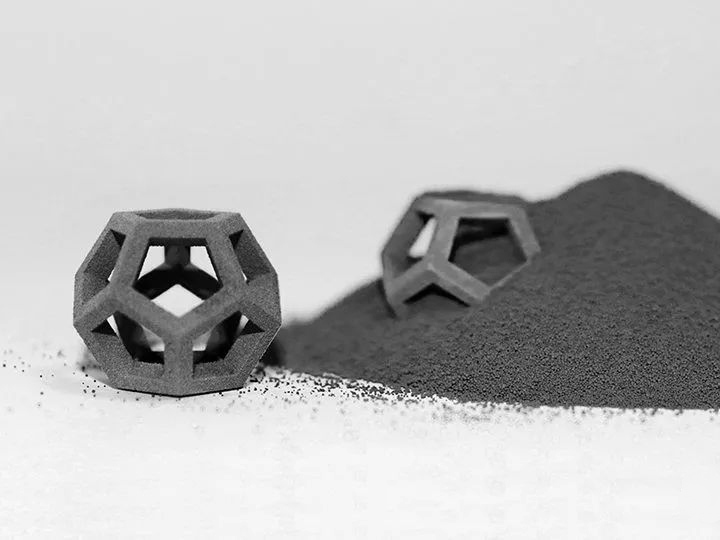Binder Jetting 3D Printing: Exploring the Technology
Binder Jetting is an additive manufacturing technology that uses a liquid binder to fuse powdered material, layer by layer, to form a solid part. The process starts with a thin layer of powder being spread across the build platform. A print head then deposits a liquid binder onto the powder in the areas defined by the digital design, which causes the powder particles to bond. This process is repeated for each layer, with the build platform lowering incrementally after completion.
What sets Binder Jetting apart from other 3D printing technologies, such as Fused Deposition Modeling (FDM), is its use of a binder material rather than heat to fuse particles. This allows Binder Jetting to process various materials, including metals, ceramics, and sand, making it a highly flexible and adaptable technology for multiple applications.
The Binder Jetting 3D Printing Process
1. Material Selection
The first step in the Binder Jetting process is selecting the material. Binder Jetting can work with various materials, including metal powders, sand, and ceramics. The process typically involves materials like stainless steel, aluminum, and titanium for metal parts. The powder used in Binder Jetting has fine particles, typically 20 to 50 microns in diameter, ensuring the print achieves the desired level of detail and accuracy. The binder used to fuse the powder is generally a liquid polymer precisely deposited to bond the powder particles.
2. Layer-by-Layer Printing
The process begins by depositing a thin powder layer across the build platform. A print head then deposits the binder selectively onto the powder according to the 3D model, binding the powder particles together. After each layer is printed, the platform lowers, and a new layer of powder is spread across the surface. The binder is applied to this new layer, and the process repeats layer by layer until the part is fully formed.
3. Post-Processing
Once the part is complete, it is removed from the powder bed, and excess powder is blown away using compressed air or a vacuum. Since the parts are not fully solidified during the printing process, Binder Jetting parts often require post-processing steps such as sintering or curing. In the case of metal parts, this typically involves heating the parts in a furnace to remove the binder and fuse the metal particles. For some applications, parts may be infiltrated with another material (e.g., bronze or resin) to improve strength and density.
Advantages of Binder Jetting 3D Printing
Cost-Effective: Binder Jetting is one of the most cost-effective 3D printing technologies. Using powder-based materials and the ability to reuse unused powder helps minimize material waste and reduce costs, making it ideal for low- to mid-volume production runs.
High-Speed Production: Binder Jetting is a fast 3D printing technology. The process uses multiple print heads to deposit the binder simultaneously across the build platform, enabling speedier print times than other methods like SLS or SLM.
Material Versatility: Binder Jetting is highly versatile, capable of printing with a wide range of materials, including metals, ceramics, sand, and even full-color materials for creating prototypes. This makes it a valuable tool for industries requiring functional and aesthetic parts.
High Geometric Complexity: The Binder Jetting process allows for creating parts with complex geometries and intricate details that would be difficult to achieve using traditional manufacturing methods. The lack of need for support structures, as seen in methods like SLS, further enhances its ability to produce intricate designs.
Materials Used in Binder Jetting 3D Printing
Binder Jetting supports a variety of materials, including metals, ceramics, and sand. The table below compares some of the most commonly used materials for Binder Jetting:
Material | Properties | Applications |
|---|---|---|
Strong, corrosion-resistant, heat-resistant | Automotive parts, functional prototypes, tooling | |
Sand | High rigidity, capable of being cast into molds | Sand casting patterns, architectural models, tooling |
Aluminum | Lightweight, high-strength-to-weight ratio | Automotive parts, aerospace components, functional prototypes |
High hardness, heat resistance, electrical insulator | Medical implants, aerospace components, industrial tools |
Common Applications of Binder Jetting 3D Printing
Binder Jetting is highly versatile and has a wide range of applications across different industries:
Prototyping: Binder Jetting is often used for rapid prototyping, especially when full-color prototypes or complex geometries are needed. Its speed and cost-effectiveness make it a popular choice for product development in industries like consumer electronics.
Automotive and Aerospace: Binder Jetting is used in the automotive and aerospace industries to produce functional parts and prototypes, such as engine components, brackets, and custom tooling. The technology’s ability to create lightweight yet strong parts makes it ideal for these sectors.
Medical: In the medical field, Binder Jetting is used to create custom prosthetics, implants, and surgical tools. Its ability to work with biocompatible materials, such as titanium or ceramics, ensures it meets the stringent requirements of the medical industry.
Casting and Molds: Binder Jetting is commonly used to produce sand casting molds and cores. The technology’s ability to quickly create highly detailed and complex molds makes it ideal for industries requiring customized metal parts.
Why Choose Binder Jetting 3D Printing?
Binder Jetting offers a unique combination of speed, versatility, and cost-effectiveness. It is ideal for industries requiring rapid prototyping, small- to medium-volume production, and functional metal parts. Whether you need to create automotive components, medical devices, or custom tooling, Binder Jetting offers a reliable and efficient solution for producing complex parts with high precision.
To learn more about Binder Jetting 3D printing and other 3D printing technologies, visit our website.
FAQs:
How does Binder Jetting compare to 3D printing technologies like SLS and SLA?
What materials can be used in Binder Jetting printing?
What industries benefit from Binder Jetting 3D printing?
Can Binder Jetting be used for mass production?
How does Binder Jetting handle complex geometries and fine details?

